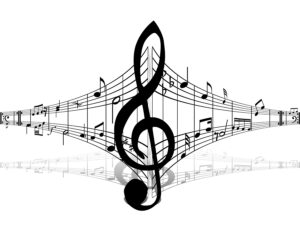We’re a group of active music teachers who specialize in private lessons for beginner students, and one question we hear all the time is: “How do I start note reading on the grand staff?” Learning note reading grand staff unlocks music literacy for piano, voice, violin, guitar, and more. Let us walk you through a friendly, step-by-step approach to build confidence and fluency.
What Is the Grand Staff—and Why It Matters
The grand staff combines the treble clef (for right hand or higher instruments) and the bass clef (for left hand or lower instruments), joined by a brace. Middle C sits between the two staves, written on a ledger line above the bass clef or below the treble clef.
This format helps beginners see how their two hands coordinate on keyboard instruments or understand high and low parts in music for other instruments.
Treble Clef: Spaces and Lines
To start reading treble clef:
- Spaces (bottom–up): F‑A‑C‑E — the simple acronym FACE helps beginners remember easily.
- Lines: E‑G‑B‑D‑F, learned with “Every Good Boy Does Fine”
We use activities like drawing the staff, flashcards, and playback games to help these stick fast.
Bass Clef: A Complementary Mnemonic System
Bass clef notes can be just as fun:
- Spaces: A‑C‑E‑G (“All Cows Eat Grass”)
- Lines: G‑B‑D‑F‑A (“Good Boys Deserve Food Always”)
According to Pianote’s guide to the grand staff, recognizing these patterns early helps students build strong visual associations across both clefs.
Practice Strategies That Really Work
- Start with one clef at a time. Focus first on spaces using FACE or All Cows Eat Grass.
- Use color-coded materials. Colored notation can help connect visual cues with memory.
- Copy notes and play back. Writing the notes yourself and then playing them reinforces recall.
- Sight-read short passages. Even simple rhythmic melodies help train pattern recognition. Over time, your brain learns to see chunks rather than single notes.
Why Note Reading Grand Staff Matters
Understanding both clefs opens the world of full piano scores and ensemble parts. Students soon learn to recognize patterns—chord shapes, common intervals, arpeggios—which speeds up reading. Familiarity with middle C as a reference point is key to flipping effortlessly between the two staves.
FAQ – Note Reading Beginners Ask
Q: When should children start learning the grand staff?
A: Around age 5 is typical—once kids can identify FACE in treble clef, we introduce the bass clef gradually.
Q: Should I learn bass clef before treble clef?
A: No—most piano teachers start with treble (FACE) then add bass clef so students can comfortably identify middle C in both contexts.
Q: How long to become fluent?
A: With short, consistent practice—5–10 mins daily—use of mnemonics and pattern recognition, many beginners read both staves confidently within a few months.
By working step by step through each clef with engaging tools and fun strategies, our beginner students get confident reading note reading grand staff in no time. Want more on how we teach rhythm and chords alongside notation? Check our guide on Four Easy Steps to Reading Chord Charts or see how FACE helps build early music fluency.
